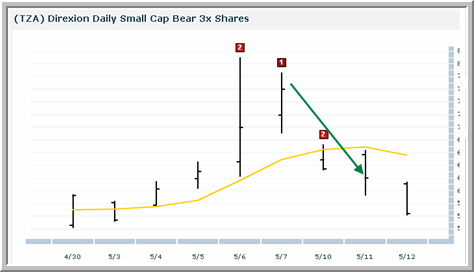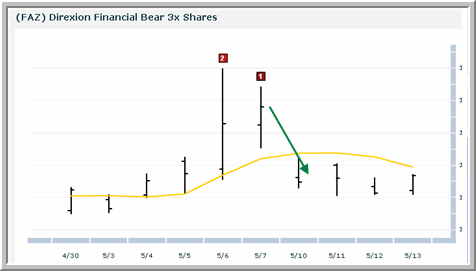Ultimate PowerRatings Trading Report: How to Sell This Market Short
With markets continuing to pullback and many stocks and exchange-traded funds (ETFs) closing under the 200-day moving average in the second half of the week, many short term traders have begun to look at the short side of the market for potential opportunities.
Ultimate PowerRatings can provide a quantified, statistically-based way for short term traders to bet against stocks and ETFs. Importantly, selling stocks and ETFs short with Ultimate PowerRatings is an extension of the Connors philosophy of buying the selling and selling the buying. In the case of selling stocks and ETFs short, the goal is to sell the buying and buy the selling.
For traders looking to sell markets short, there are a few rules of the road to ensure that the quantified edges of Ultimate PowerRatings are on your side. But the most important rule is this one:
Only sell short stocks and ETFs that have Ultimate PowerRatings of 1 or 2.
One of the amazing features of PowerRatings is that stocks and ETFs that have earned our lowest PowerRatings have made moves to the downside that are as significant or more so than the moves top rated stocks and ETFs typically make to the upside.

Above: Days after earning an Ultimate ETF PowerRating downgrade to 1, the ^TZA^ dropped by more than 18%.
For example, our lowest rated ETFs have made significant short term gains less than 21% of the time. Our highest rated ETFs have made significant short term gains just over 79% of the time.
The statistics for stocks and leveraged ETFs support the same conclusion: there is a historical short term edge in selling short stocks and ETFs with low PowerRatings of 1 or 2.

Above: Another recent short selling opportunity in a low-rated ETFs, this time in the ^FAZ^, which fell by more than 15% shortly after earning a PowerRatings downgrade to 1.
More often than not, stocks and ETFs tend to move higher over time. But bear markets can happen and opportunities to sell markets short do exist. The goal of the short term trader is to be wary of the surge of emotion that often accompanies a major market decline, and to stick with a trading discipline that is governed by the data. By waiting for stocks and ETFs to earn significant PowerRatings downgrades, short term traders can put real, quantified edges behind every trade, only selling short those markets that are most likely to move lower in the short term.
Find out more about what Ultimate PowerRatings can do for you and your trading. Quantified ratings for stocks, ETFs and leveraged ETFs – all in one place. Click here to launch your free, 7-day trial to our Ultimate PowerRatings today.
David Penn is Editor in Chief at TradingMarkets.com.
